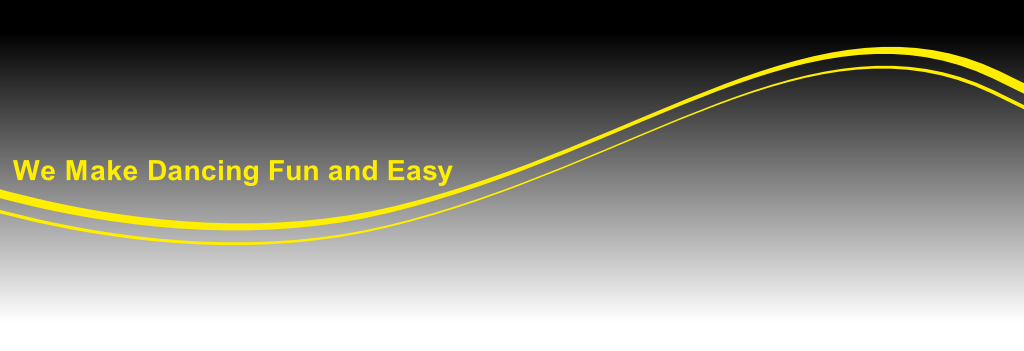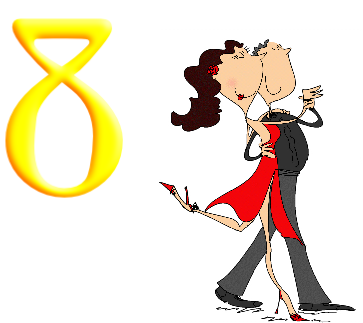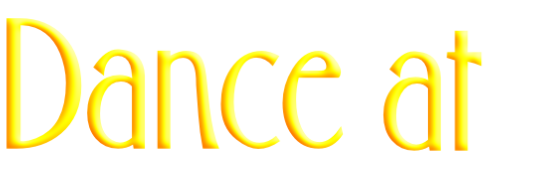



427511






Useful Information

Dance Classes For Adults & Teenagers in
Worcestershire :
Gloucestershire :
‘Dance at 8’
All contents of this Web site copyright C 2013 by ‘Dance at 8’. No part of this site http://www.danceat8.com or the related information may be reproduced or transmitted in any form, by any means (electronic, photocopying or otherwise) without the prior written permission of the publisher.




Ballroom Dance Styles
Australian ‘New Vogue Style’ Ballroom 'Dance at 8's' Australian 'New Vogue Style' Ballroom is a subtle blend of American Smooth and European Ballroom resulting in an exciting Sequence style which enables dancers to express themselves using arm head and body moves within a set sequence of variations. 'New Vogue Style' works in a similar fashion to Sequence where all couples start and finish a 16 or 32 bar routine in the same position. The difference is, during the routine there are many options with arm, head and body positions making your routine sometimes quite different than the other couples. Dancers will also have the chance to learn more advanced variations which in the past would not have been included in Modern Sequence routines.
WALTZ The Original Ballroom Dance, full of grace and elegance, classical yet modern.. The Waltz has a long history - without going into great depth - around the end of the nineteenth century, two versions of the waltz were developed. The first was the Boston, a slower waltz with long gliding steps. Although the Boston disappeared with the first world war, it did stimulate development of the English or International style which continues today. The second was the hesitation, which involves taking one step to three beats of the measure. Hesitation steps are still widely used in today's Waltz. Danced in 3/4 time
FOXTROT Said by some to have originated from vaudeville performer, Harry Fox's show in 1913. The Foxtrot is often associated with the style of Fred Astaire and Ginger Rogers. It is now a standard ballroom dance around the world. It is a good foundation for social dances in 4/4 time. The basic rhythm of Foxtrot is Slow-Slow-Quick-Quick
SOCIAL FOXTROT can be danced to a variety of jazzy musical styles. Most of the Big Band standards played at weddings and dances are Foxtrots.
SLOW FOXTROT or REAL FOXTROT is a more technical style that is commonly seen in Ballroom Dance Competitions and on Strictly Come Dancing.
QUICKSTEP It is very popular in Europe as a competition dance. It ranks among the "Big Five," the other three being the Slow Foxtrot, the Waltz, the Tango and the Viennese Waltz.
AMERICAN SMOOTH STYLE WALTZ / FOXTROT has a fun "theatrical" quality because the couples can open up to allow for smooth flowing lines and spins. Fred Astaire and Gene Kelly both used the long, smooth movements of Waltz to cover a lot of ground gracefully in their cinematic routines. American Smooth is more elaborate and less restrictive style.
TANGO The choreographic sources of the Tango are Argentine and Spanish folk dances. In the 19th century, the Tango became wide-spread in South America, and it first appeared in Europe at the beginning of the 20th century.
ARGENTINE TANGO The forerunner of the Modern Tango . The Argentine Tango was created by the Gauchos in Buenos Aires. It was actually an attempt on their part to imitate the Spanish dance except that they danced it in a closed ballroom position. The essence of Argentine tango is about life and, especially, about the relationship between a man and a woman. The dance is called "the history of love - for three minutes."
MODERN TANGO or BALLROOM TANGO A refined, technical version of the Argentine Tango. A closer hold and slick staccato actions but with similar intense feeling to Argentine Tango. Ballroom Tango is danced in 4/4 time. Easily Recognised by it’s sharp staccato head movements.
MILONGA The Milonga is a Spanish dance first originated in Andalusia. As the fascinating music travelled the world it assumed various aspects. In Buenos Aires the Gauchos danced it in what is called a closed position, in the lower class cafes. Here their interpretation of it emerged into what today is our Tango. The Milonga enjoyed a popular resurgence some years ago through the Juan Carlos Copes group who performed it the world over.
VIENNESE WALTZ is a rotary dance where the dancers are constantly turning either in a clockwise (natural) or anti-clockwise (reverse) direction interspersed with non-rotating change steps to switch between the direction of rotation. A true Viennese waltz consists only of turns and change steps. Viennese waltz is the original form of the waltz and the first ballroom dance in the closed hold or "waltz" position.
Latin American Dance Styles
Many dances popular around the world have originated in Latin America. Three such dances: the Cha Cha, Samba, and Rumba, plus the Paso Doble from Europe and the Jive from North America, have been singled out and are now performed all over the world as Latin-American dances in international Dance Sport Competitions, as well as being danced socially.
CHA CHA A lively, bubbly and cheeky dance with quick moves. First seen in the Ballrooms of America in the 1950's. it was developed from the Mambo.
SAMBA This Brazilian dance was first introduced in 1917 but was finally adopted by Brazilian society in 1930 as a ballroom dance and used at Carnival parties. The style is to bounce steadily and smoothly in 2/4 time. They say that the Samba was introduced in the United States in 1939 by the late Carmen Miranda.
RUMBA became a popular Ballroom / Latin dance and was introduced in the United States around 1933. A passionate story of Love and Tension between Man & Woman. It is an Americanised version of the Cuban Son and Danzon. It is danced in 4/4 time.
PASO DOBLE is based on the Spanish Bullfight. It portrays the Torero (the male dancer) and his cape (his partner), and is danced to the characteristic march music used for procession at the beginning of a Bullfight.
SWING An ever popular blend of several African American dances, which include Lindy and Ragtime Jazz and Blues, as well as all the other dance music to accompanying dances of the past ninety years. Today it generally refers to the ballroom and night club version which is based on two slow and two quick counts or the slow and two quick counts of rhythm dances. The association between youth and this dance has continued through its subsequent metamorphoses as: Swing, Jive, Rock & Roll, Boogie-Woogie, Hustle, Ceroc and LeRoc - French Jive.
JIVE OR AMERICAN JIVE International competitive Swing dance with elements of the Lindy Hop and Jitterbug. Characterized by up-tempo single time music danced with triple steps done primarily on the toes with very lively movement.
HOLLYWOOD STYLE LINDY Hollywood Swing is a style of Lindy Hop from Los Angeles in the 1940s. The dance has a variety of different names, Smooth Style Lindy, L.A. Style & Dean Collins Style.... "Hollywood Style" reflects both the geographic origins of the dance and also it's appearance in so many movies. Hollywood Swing is not only the absolutely authentic jitterbug style it is also the original rock 'n' roll jive as danced in the classic R 'n' R films of the '50s. This is the Real Deal.
ROCK 'N' ROLL A popular form of the Swing or Lindy Hop. Began as a dance done mostly by teenagers who were fans of singers like Elvis Presley and the Beatles.
BOSSA NOVA The music was born of a marriage of Brazilian rhythms and American Jazz. The dance, which is said to have originated at Carnegie Hall in 1961, is based on the slower, more subtle Salon Samba and features either type of Clave Beat or a Jazz Samba in 4/4 time.
HUSTLE or 3 COUNT HUSTLE Similar style disco dances which had began in the 70's and enjoys popularity yet today. In the movie "Saturday Night Fever." The Hustle is danced by John Travolta to the popular beat of the Bee Gees. Great ‘Retro’ dance.
MERENGUE The national dance of the Dominican Republic and Haiti is 2/4 time with syncopation of the first beat interpreted by the dancers as a slight limp. It became popular in 1957. A standard Latin American dance, very popular throughout the Caribbean and South American.
SALSA This is a favoured name for a type of Latin music which, for the most part, has its roots in Cuban culture and is enhanced by jazz textures. The word, Salsa, means sauce denoting a "hot" flavour and is best distinguished from other Latin music.
SALSA RUEDA also known as CASINO. Salsa Rueda means salsa in a "wheel". Salsa Rueda is dynamic dance, danced as a group with the follower being passed in the wheel and exchanging partners. Sometimes done as wheels within wheels - and all done in time to spicy salsa music. A very social fun style.
Press The ‘Dance Classes’ button above to find the next set of classes to join in!
Everyone welcome, with or without a dance partner.
Here is more information about the various Ballroom, Latin American & Argentine Dance styles. Which ones would you like to learn? We can teach you !

All of our Fun Dance classes are held throughout the year in Worcestershire & Gloucestershire
| FREE Dance Newsletter - Here |
| Worked with... |
| About Us |
| Why choose Dance at 8? |
| What others say about 'Dance at 8' |
| Contact Us |
| Practice & Social Dances |
| 'Dance at 8' Dance Videos |